culture, dance and theater, noh theater
Noh Theater Unveiled: The Ultimate Guide to Japanese Performing Arts

Thalia Harris
Posted on May 25, 2023
Share:
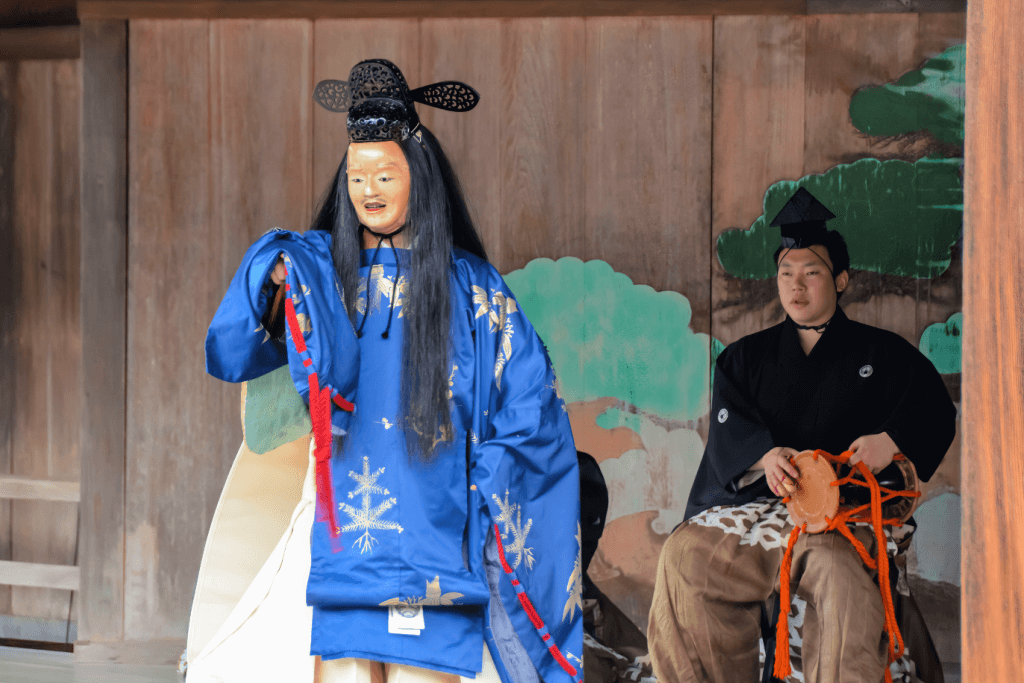
Noh theater is part of a rich tapestry of art forms that enchant people worldwide. From the mesmerizing movements of traditional dance to the in-depth stories told in theater, Japan’s cultural history includes a wide range of theatrical expressions that are both lively and different.
Specifically, noh theater is an old, highly stylized art form that combines music, dance, and poetic stories seamlessly. To emphasize, noh theater creates a mesmerizing atmosphere with its unique masks, elaborate costumes, and ritualistic acts that make people want to learn more about life. Step into the beautiful world of Japanese dance and theater, where the old and the new work together in a new and old way.
Noh
Noh theater is a traditional form of musical theater in Japan. It began in the 14th century and is still a big part of the country’s culture. It has dance, music, and stories. Zen Buddhism inspired it. The stage for noh shows is simple, but the masks and costumes are very detailed. In a regular noh play, most actors are men, using small movements, gestures, and chanting to show how they feel. Its plays are primarily about literature, history, and myths; many will always be interesting.
The fue (flute), kotsuzumi (shoulder drum), tsuzumi (hip drum), and taiko (stick drum) are some of the instruments used in traditional Japanese noh theater. The fue adds calm tones to the mood, while the kotsuzumi and otsuzumi drums add sharp accents and deep reverberations.
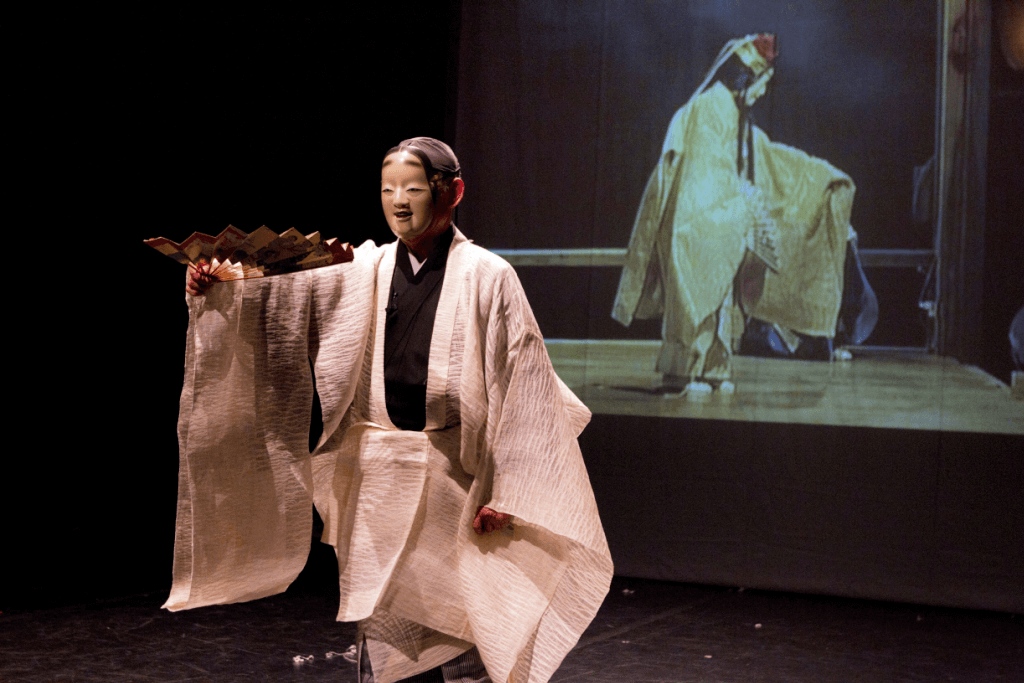
The sound of the taiko drum is intense and dramatic. Drummers also use their voices to move in time with the players through kakegoe, shouts, and calls. These combined harmonies bring stories to life, heighten feelings, and keep the rhythm. They keep the audience’s attention and help keep the art form of noh theater alive. Moreover, taiko drums are heavily present at summer festivals in Japan, especially Obon.
The slow pace and routines create an atmosphere that makes you want to think. Noh theater is significant in Japan and has influenced modern writing and theater. People from all walks of life come to see noh performances because they are elegant, valuable, and beautiful over time.
Kabuki
Kabuki theater is undoubtedly famous for its exciting shows. It started in the Edo period (1603–1867) and has dramatic stories, elaborate outfits, stylized makeup, and rhythmic music. At first, women performed kabuki, but over time, it changed to an all-male ensemble, with men playing the parts of women very well.
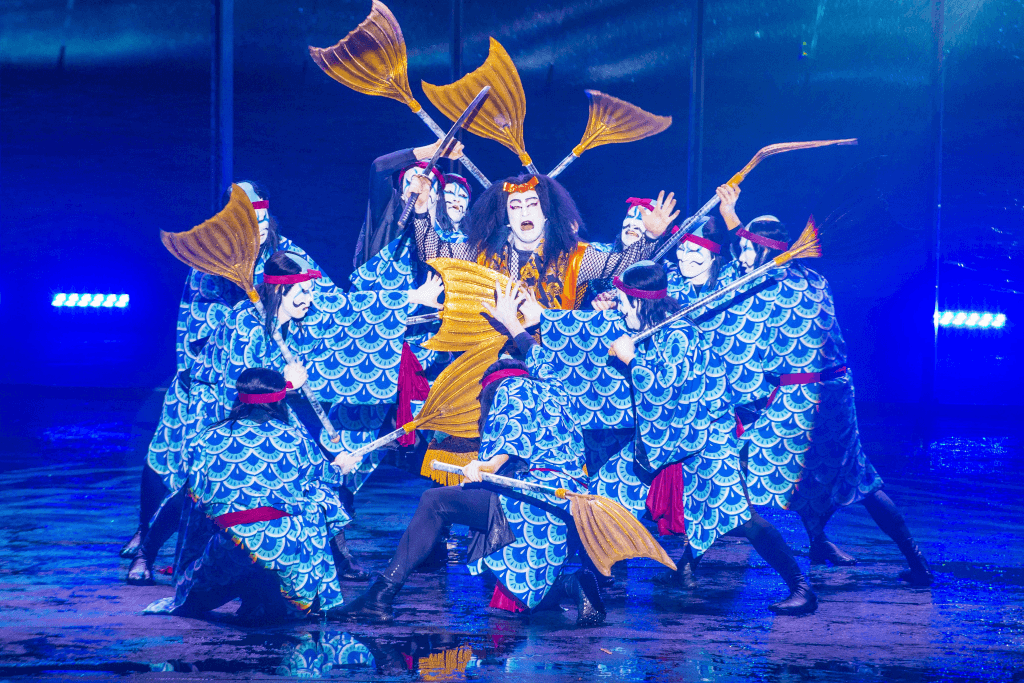
Moreover, its plays cover various topics and have a dramatic flair, over-the-top actions, and complex stagecraft. The characters’ traits and social standing are shown through their colorful clothes. Kumadoori makeup is unique because it uses bright colors and shapes to show different types of people.
The intricate designs, bright colors, and symbolic meanings of kabuki outfits make them beautiful. These kimonos are works of art that show who the people are and where they came from. The rich fabrics, bright colors, and fancy accents draw the audience in.
What are kabuki costumes like?
Generally, costumes are essential for showing who a character is, differentiating stage roles, and making the story more interesting. Specifically, the flowing fabrics make the players’ movement all the more enjoyable. Kabuki costumes add depth, elegance, and grandeur to shows, capturing people’s attention worldwide with their intricate designs, symbolic meanings, and visual beauty.
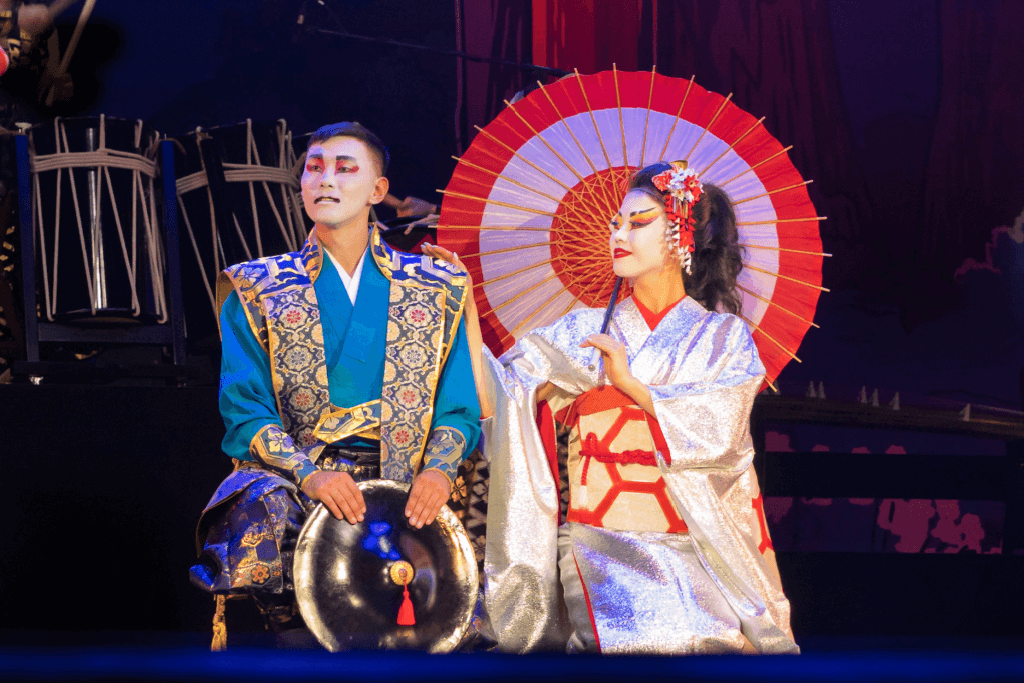
Furthermore, the players are accompanied by traditional instruments like the shamisen, taiko, and fue, which create melodic and rhythmic backgrounds. Moreover, taiko and fue are also used in kabuki. It also uses the shamisen, a three-stringed instrument like a banjo. Kabuki theater draws people in with its big scale, dramatic stories, elaborate costumes, stylized makeup, and enchanting music. It helps keep Japan’s cultural heritage alive and draws fans from all over the world.
Are you looking to enjoy even more of traditional Japan? Try Sakuraco! Sakuraco delivers traditional Japanese snacks, sweets, tableware, and more from local Japanese makers right to your door, perfect for a pleasant snack time at home!
Bunraku
Bunraku, also called ningyo joruri, is a traditional Japanese puppet theater known for its skill, stories, and combining puppets, music, and narration. Puppeteers with a lot of skill move giant, carefully made puppets in sync with their movements while wearing black robes.

The story is told by a tayu who chants while Gidayu-bushi players play instruments like the shamisen. Bunraku shows are based on history, literature, and traditional stories. They usually deal with love, tragedy, and honor and have complicated plots and many feelings. The only instruments used are a chanter/narrator and a shamisen player, which differs from kabuki and noh.
When puppeteers, storytellers, and singers work together, the experience is immersive and emotional. Bunraku theater is an essential part of Japan’s cultural history. It uses puppets, stories, and music to captivate audiences and show off the skill and talent of this traditional form of Japanese theater.
Butoh
Butoh (舞踏) is a modern dance style originating in Japan. It features slow and controlled movements, exaggerated poses, and sometimes even grotesque imagery. It emerged in the late 1950s as a response to the disillusionment experienced by the Japanese people after World War II. Butoh performances delve into the depths of societal and personal sadness, aiding dancers in navigating this emotional landscape.
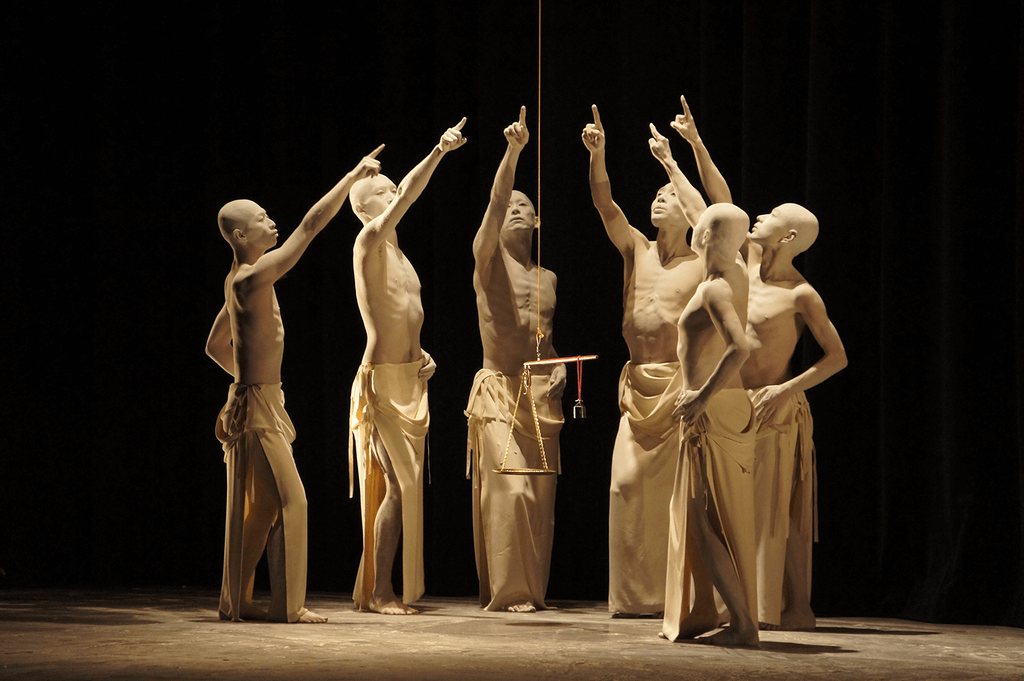
Generally, butoh isn’t as rigid as the Japanese theater or Western dance styles. Tatsumi Hijikata (1928–1986) and Kazuo Ono (1906–2010) played pivotal roles in the inception of this dance style. Hijikata is the “architect” of butoh due to his innovative teaching methods and choreographic contributions, shaping the foundations of the art form. On the other hand, Ono embodies the “spirit” of butoh, embodying its essence and bringing it to life through his performances.
What is the philosophy of butoh dance?
This dance style is based on the idea that you should let go of yourself and use yourself to show how complicated life is. Most butoh workouts involve making up movements on the spot and making shapes with the body.
One of these routines is the “lightning bolt,” in which one dancer uses a wooden pointer to guide their partner as if a lightning bolt was hitting them. In response, the second partner screams quietly and moves forward as if possessed. By the end of the practice, they have been “emptied” and are ready to express themselves without restraint.
In keeping with the idea that people are like a blank canvas, butoh shows have very little in the way of costumes and makeup. With this in mind, most dancers wear white body paint, which makes them look like ghosts. Depending on the dance company or school, they might also wear crooked hats, loose dresses, or even face paint that gets all over their faces.
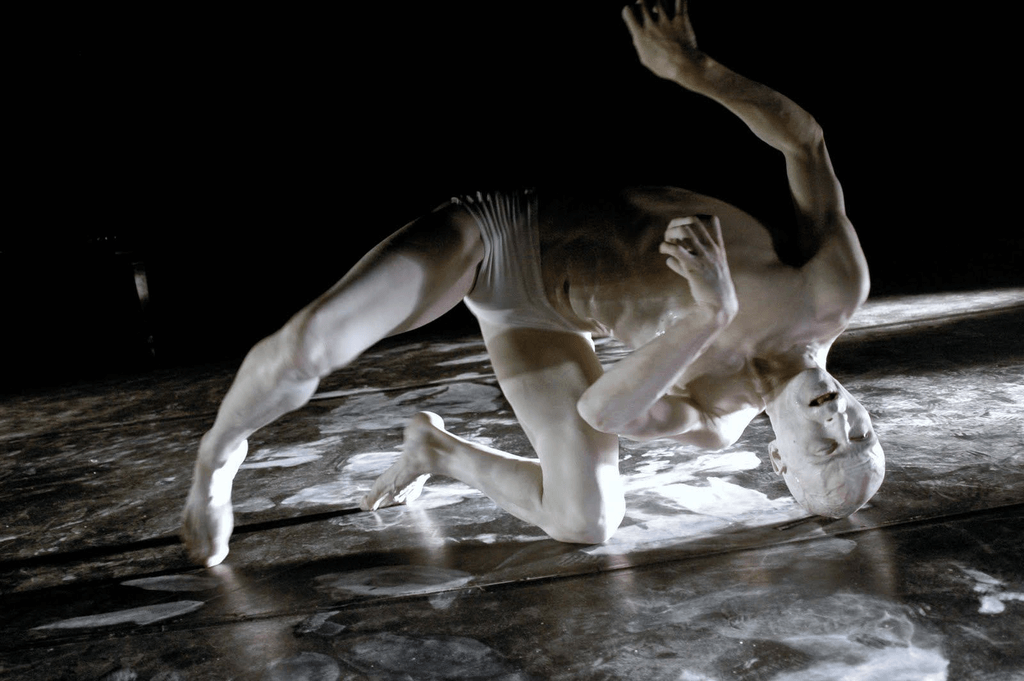
Not to mention, music accompaniment also changes across performances. Some performances, like noh and kabuki, use traditional Japanese instruments. Other performances use modern instruments, like the electric guitar, piano, and even old jazz records. Butoh is a dance style that is part of the underground and captivates people worldwide.
In any event, the profound narratives, elaborate costumes, and spiritual themes in Japanese dance and theater enchant audiences worldwide. Whether puppets, beautiful face paint, or even slow movement, these performing arts have been around for a long time and have done well. Have you ever seen a type of entertainment from Japan? If you haven’t been to any, which one would you like to? Tell us in the comments section below.

Discover authentic flavors with Sakuraco
Get Sakuraco 

Discover authentic flavors with Sakuraco
Get Sakuraco 
Related Articles

Mount Fuji Snacks That You Need to Try This Summer!
Mount Fuji, Japan’s highest and most iconic peak, has long served as a muse not just for artists and poets, but also for confectioners. Its symmetry and snow-capped grandeur make it an ideal motif for culinary artisans nationwide. These treats capture the spirit of Fuji in edible form, reflecting regional ingredients, seasonal symbolism, and time-honored techniques.

Okinawa City is Home to Southeast Botanical Gardens!
The Southeast Botanical Gardens in Okinawa are one of the island’s most beautiful and relaxing destinations. In Okinawa City, they offer a lush escape filled with tropical plants, ponds, animals, and seasonal displays.

Mount Fuji Tour: Great Adventures Await You This Summer!
Mount Fuji is one of the most famous landmarks in Japan. People worldwide visit to see its beauty and enjoy exciting yearly outdoor activities!

Mikoshi: Why Are These Portable Shrines So Important?
Japan’s summer festivals are known for their energy, color, and tradition. And at the heart of many lies the mikoshi.



